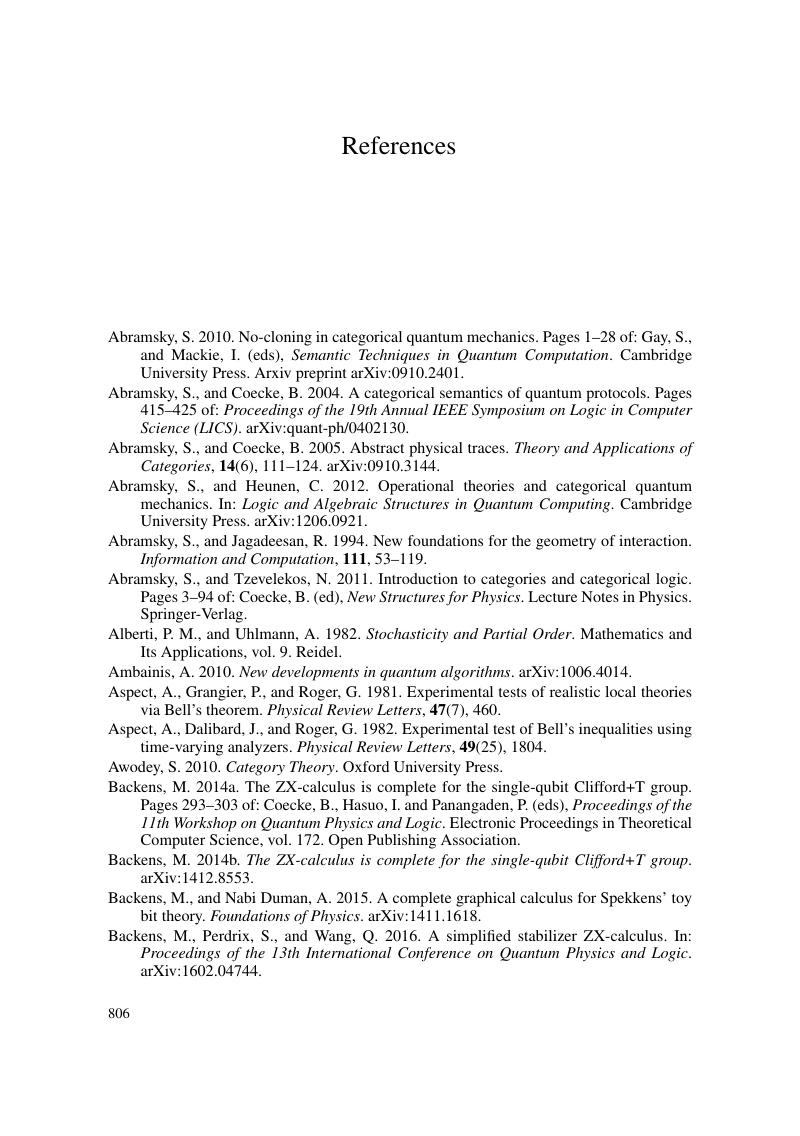Book contents
- Frontmatter
- Contents
- Preface
- 1 Introduction
- 2 Guide to Reading This Textbook
- 3 Processes as Diagrams
- 4 String Diagrams
- 5 Hilbert Space from Diagrams
- 6 Quantum Processes
- 7 Quantum Measurement
- 8 Picturing Classical-Quantum Processes
- 9 Picturing Phases and Complementarity
- 10 Quantum Theory: The Full Picture
- 11 Quantum Foundations
- 12 Quantum Computation
- 13 Quantum Resources
- 14 Quantomatic
- Appendix Some Notations
- References
- Index
- References
References
Published online by Cambridge University Press: 30 March 2017
- Frontmatter
- Contents
- Preface
- 1 Introduction
- 2 Guide to Reading This Textbook
- 3 Processes as Diagrams
- 4 String Diagrams
- 5 Hilbert Space from Diagrams
- 6 Quantum Processes
- 7 Quantum Measurement
- 8 Picturing Classical-Quantum Processes
- 9 Picturing Phases and Complementarity
- 10 Quantum Theory: The Full Picture
- 11 Quantum Foundations
- 12 Quantum Computation
- 13 Quantum Resources
- 14 Quantomatic
- Appendix Some Notations
- References
- Index
- References
Summary

- Type
- Chapter
- Information
- Picturing Quantum ProcessesA First Course in Quantum Theory and Diagrammatic Reasoning, pp. 806 - 821Publisher: Cambridge University PressPrint publication year: 2017



